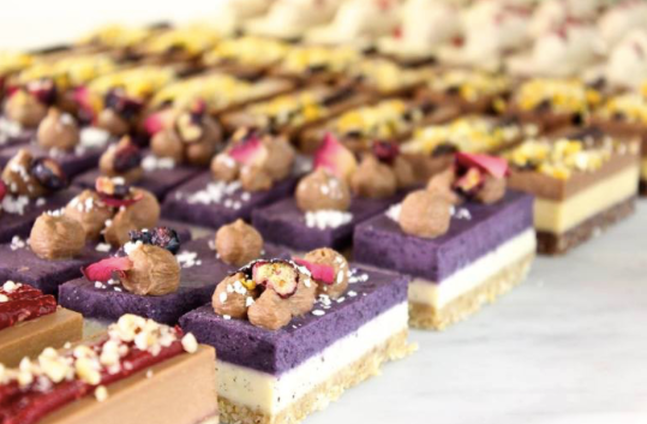
One thing I hate about the health and fitness industry is when brands take advantage of the innocent consumer and market products as ‘healthy’ when in fact they aren’t.
By using marketing ploys such as ‘low carb’, ‘sugar free’, ‘low fat’, ‘natural’, ‘made from real fruit’, many companies deceive the consumer into thinking that what they are consuming is either good for them or conducive to weight loss.
Although I am passionate about choosing more natural and clean foods most of the time, a big issue I’m seeing is consumers thinking that just because a food is ‘clean’ means that it will help them in their bid to lose body fat.
One of the latest clean eating fads are ‘raw desserts’, which are generally made from an abundance of fruit and nuts. Now don’t get me wrong, there are certainly benefits of choosing a raw dessert over the processed kind (I will touch on that later), but the problem is that people think that because the dessert is raw, natural, and free from artificial additives it means they can eat as much as they like, or that it doesn’t count as a ‘cheat’ meal
Fruit and nuts are healthy right?!
Fruits such as dates and bananas, and nuts such as cashews, almonds and coconut seem to form the basis of most raw desserts. Maple syrup, honey or agave are often added to provide more sweetness. Albeit these are natural ingredients, what people forget to consider is that the actual macronutrient value of the dessert may not be all that different from the ‘dirty’ alternative. Macronutrients refer to proteins, carbohydrates and fats. When it comes down to clean dessert alternatives, just because the sugar is from fruit or the fat is from nuts doesn’t change the fact that it’s calories being consumed by your body. A sugar provides 4 calories per gram regardless of whether it’s from fruit or table sugar, and a fat provides 9 calories per gram whether it’s from a nut or cream and butter.
Take raw caramel slice as an example. You may find this blog post ironic in fact, because I posted a recipe for my raw caramel slice not long ago. However you will notice that my recipe came along with a warning that it should still be consumed in moderation. This is because even though it’s a clean alternative, it is still an extremely calorie dense dessert. If you’ve ever made a raw dessert yourself or even some raw protein balls, you will know just how much dried fruit and nuts go into these health-ified treats.
Given that weight/fat loss is ultimately just an equation of calories in vs calories out, whether you have a clean dessert or a ‘dirty’ dessert may not make too much difference to your ultimate goal (assuming the portion sizes contain roughly the same amount of calories). In that respect, I feel that sometimes it’s worth enjoying the ‘naughty’ version when it comes time to have your treat meal – life is about balance after all!
In saying that raw/clean desserts are obviously more beneficial for your health in that they are less processed (or in the case of raw desserts, unprocessed) and don’t contain artificial flavours and preservatives. They are also likely to contain a higher percentage of good fats such as monounsaturated and polyunsaturated fats, rather than bad fats like trans fat. However looking from a purely weight or fat loss perspective, they are likely to sit relatively on par.
So although I still enjoy raw desserts and experimenting with making them, I think it’s important that they are not misunderstood to be able to be consumed in larger quantities than ordinary desserts. Nor should they be included as part of an eating plan for weight or fat loss. Just because they are ‘clean’ or ‘raw’ doesn’t mean they are any less of a treat.
With love,


